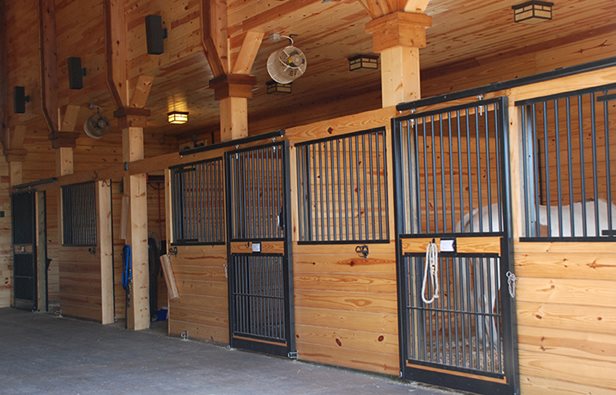What Size Should Your Horse Barn Be?
If you’re building a new horse barn, this question might keep you counting sheep (or horses) at night. But you don’t need to lose sleep if you follow some general guidelines for sizing a barn.
Start by considering the number and breed of your horses, the type of riding you do, storage needs, climate, and, of course, budget. Then call in an expert.
Ron Foust is an experienced Lester dealer based in East Central Minnesota. Over the past three decades, he’s put up many equine buildings – from hobby barns to complex riding arenas with living quarters. In his experience, “no two equestrian projects are alike.” Here’s his advice for how to get the best-sized barn for your horses and you.

Building Size
Obviously, the number of horses – yours, those boarding or both, now and in the future – is one of the biggest sizing factors. It dictates the number of stalls. Thirty-six feet is a common building width (12’ wide alley, flanked by 12’ wide stalls on each side) and 10’ for height. Length will depend on number of stalls, stall length, and additional rooms: tack room, wash bay, bathroom, lounge/office, and storage for feed, hay and equipment.
“I really like a minimum of 12 feet for the center aisle. I’ve done a few 10-foot aisles and it gets too tight for horses passing each other, especially if they’re territorial” Ron adds. Getting too narrow, can also lead to damage around doors. “Two feet makes a big difference.”
Stall Size
The stall size debate seems to have settled on 12’ by 12’ for an average 1,000-pound horse. Ron says 90 percent of his projects have 12’ by 12’ stalls; he rarely get orders for 10’ by 10’ stall, like he did years ago. A horse should be able to turn around, lie down and get up comfortably, and be groomed in place. Movable dividers can be added and are essential for foaling.
Riding Arena
If you’re riding for pleasure, start with a standard indoor arena size of 60’ wide by 120’ long and a minimum height of 14’. If you’re doing dressage, bump up the dimensions to at least 70’ wide by 200’ long and 16’ high, to allow for speed, jumping and turn-around space.
Hay and Equipment Storage
To reduce fire hazards, Ron sees a lot of people storing just enough hay for a week or so. Having a separate wing or room for hay storage works fine for people with a few horses for personal use. Those with larger operations and staff like a separate hay building. Also, don’t forget space for tools and equipment – wheel barrows, brooms, ladders, buckets, lawn tractors, four-wheelers, trailers, etc.
Ron adds, “In my experience, equine folks seem to know what they want. Lester Buildings is here to help them achieve it, and fine tune the details.”
Still not sure what size barn you need? See a complete library of equine projects, including those in your area, at lesterbuildings.com. Once there, you can also enter your zip code and locate your nearest Lester representative.
